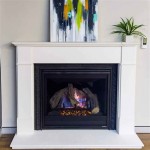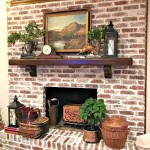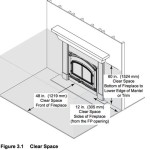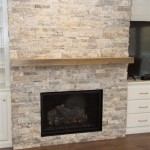Antique Fireplace Mantels: A Timeless Investment in Architectural Heritage
Antique fireplace mantels represent more than just decorative elements; they are tangible pieces of history, reflecting the architectural styles, craftsmanship, and social customs of bygone eras. Their presence in a home provides a sense of authenticity, character, and enduring elegance difficult to replicate with modern reproductions. This article explores the value, types, considerations, and preservation of antique fireplace mantels.
The allure of antique fireplace mantels lies in their unique combination of artistry and functionality. Prior to the advent of central heating, the fireplace served as the primary source of warmth and a focal point for domestic life. As such, the mantel, often crafted from materials like wood, marble, or stone, evolved from a rudimentary shelf into an elaborate expression of wealth and taste. The intricate carvings, detailed moldings, and the overall design of these mantels mirrored prevailing aesthetic sensibilities, providing insights into the historical period from which they originated.
Investing in an antique fireplace mantel offers several advantages. Firstly, it introduces a distinct element of individuality and historical significance to a property. No two antique mantels are exactly alike, each bearing the marks of its age and craftsmanship. Secondly, antique mantels can appreciate in value over time, particularly those crafted from rare materials, designed by noted artisans, or associated with significant historical events. Finally, utilizing an antique mantel contributes to sustainable practices by repurposing an existing architectural element, reducing the demand for newly manufactured goods.
Identifying Key Styles and Historical Periods
Distinguishing between different styles and periods is essential for properly evaluating and appreciating an antique fireplace mantel. Common styles include:
*Georgian (1714-1830):
Characterized by symmetry, classical proportions, and refined details. Mantels often feature fluted columns, dentil moldings, and carved swags or urns. The materials commonly used were wood, often painted white or cream, and marble. *Federal (1780-1830):
An American adaptation of Georgian and Neoclassical styles. Federal mantels are typically lighter and more delicate than their Georgian counterparts, with intricate carvings of eagles, stars, and other patriotic motifs. Painted wood and marble remain popular choices. *Empire (1804-1815):
Influenced by Napoleonic France, Empire mantels emphasize grandeur and opulence. Key features include heavy proportions, strong geometric shapes, and embellishments such as gilded accents and classical figures. Mahogany and marble are frequently employed. *Victorian (1837-1901):
Victorian mantels encompass a diverse range of styles, reflecting the eclecticism of the era. Common features include elaborate carvings, ornate brackets, and the use of dark woods such as walnut and mahogany. Cast iron and tile inserts also become increasingly common. *Arts and Crafts (1880-1920):
A reaction against industrialization and mass production, Arts and Crafts mantels emphasize simplicity, natural materials, and handcrafted details. Oak is a prevalent wood choice, often left unfinished or stained to showcase its grain. Tile insets featuring nature-inspired motifs are also common.Recognizing these stylistic distinctions helps determine the approximate age and potential value of an antique mantel. Examining the construction techniques, materials, and hardware can further assist in authentication.
Essential Considerations Before Purchasing
Acquiring an antique fireplace mantel requires careful planning and thorough research. Several factors warrant consideration before making a purchase:
*Dimensions and Compatibility:
Accurate measurements of the existing fireplace opening are crucial. The mantel must fit proportionally within the space, ensuring compliance with local building codes and safety regulations regarding clearances from combustible materials. Consider the height of the ceiling and the overall scale of the room to ensure the mantel does not appear disproportionate. *Condition and Restoration:
Carefully assess the condition of the mantel for signs of damage, such as cracks, chips, warping, or insect infestation. While some imperfections are expected in antique pieces, extensive damage may necessitate costly repairs or restoration. Determine to what extent restoration efforts might impact the mantel’s historical integrity and value. Seek the advice of a qualified conservator if necessary. *Authenticity and Provenance:
Establishing the authenticity of an antique mantel can be challenging. Request documentation such as original sales receipts, photographs, or appraisals to verify its age and origin. Research the dealer's reputation and expertise in antique fireplace mantels. Be wary of pieces represented as "antique" that may be reproductions or heavily altered. *Material and Construction:
Identify the materials used in the mantel's construction, such as wood species, marble type, or metal components. Understanding the material's properties and inherent vulnerabilities is critical for proper care and maintenance. Examine the construction techniques employed, such as joinery methods and carving styles, to assess the mantel's quality and craftsmanship. *Installation Requirements:
Installing an antique fireplace mantel may require professional assistance. Ensure the mantel is properly and securely attached to the wall, taking into account the weight of the piece and the structural integrity of the surrounding wall. Consider the compatibility of the mantel with the existing fireplace system, including the firebox and chimney flue.Preservation and Maintenance for Longevity
Proper preservation and maintenance are essential to ensure the long-term survival of an antique fireplace mantel. Several strategies can be employed to protect and preserve its historical integrity:
*Regular Cleaning:
Dust the mantel regularly with a soft, dry cloth to remove surface dirt and debris. Avoid using harsh chemicals or abrasive cleaners that can damage the finish. Use appropriate cleaning agents specifically designed for the material of the mantel, such as wood polish or marble cleaner. *Humidity Control:
Maintain a stable humidity level in the room to prevent warping, cracking, or other moisture-related damage. Use a humidifier or dehumidifier as needed to regulate humidity levels. Avoid placing the mantel in direct sunlight or near sources of heat or moisture. *Protection from Damage:
Protect the mantel from accidental damage by avoiding placing heavy objects on it or bumping it with furniture. Use felt pads or coasters to prevent scratches or stains. Consider installing a protective barrier, such as a screen or glass panel, to shield the mantel from flames or soot. *Professional Conservation:
Seek the services of a qualified conservator for any necessary repairs or restoration work. A conservator can assess the condition of the mantel, recommend appropriate treatment options, and carry out repairs using reversible and minimally invasive methods. Avoid attempting to repair or restore the mantel yourself, as this may cause irreversible damage. *Documentation:
Maintain detailed records of the mantel’s history, provenance, and any conservation treatments performed. This documentation will be valuable for future owners and conservators and can enhance the mantel’s historical significance. Take photographs of the mantel from different angles and distances, noting any unique features or areas of concern.In conclusion, the acquisition and preservation of antique fireplace mantels represent a commitment to preserving architectural heritage. By understanding the historical context, stylistic variations, and care requirements associated with these pieces, homeowners can ensure their enduring beauty and significance for generations to come.

Antique Fireplace Mantel 70 X 100 The Door

Antique Wood Marble Carved Fireplace Mantels Oley Valley Architectural Antiques

Antique Fireplace Mantel 66 ⅛ X 81 ½ The Door

Vintage Fireplace Mantel Recycling The Past Architectural Salvage

Antique Wooden Fireplace Mantel Carved With Satyr And Columns 19th Century Italy For At 1stdibs Mantels Mantles

Antique Wood Marble Carved Fireplace Mantels Oley Valley Architectural Antiques

Antique French Limestone And Marble Fireplace Mantels For Interiors Historic Decorative Materials A Division Of Pavé Tile Wood Stone Inc

Gorgeous Mantel Victorian Fireplace Architectural Antiques Antique

Style A Faux Fireplace With Vintage Decor Jennifer Rizzo

29 Fabulous Antique Fireplace Ideas Shelterness








